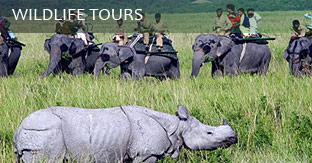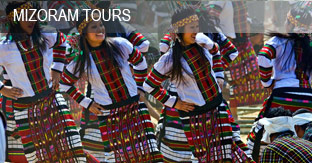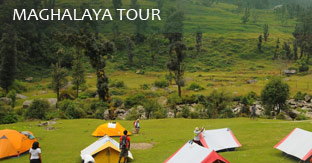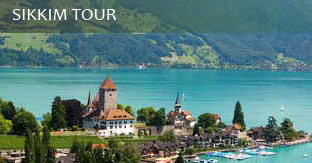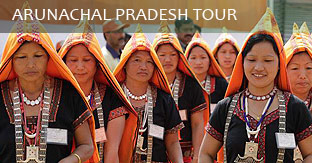This predominantly tribal state is blessed with great valleys, meandering streams, high mountains, deep gorges and a rich valley of flora and fauna.
ABOUT NAGALAND
The state of Nagaland, covering an area of 16,488 sq. km. is encircled by Assam in the north and west, by Burma and Arunachal Pradesh in the east, and Manipur in the South. The state is predominantly dominated by Naga communities and hence, it forms a single cultural region generally definable by common cultural and linguistic traditions. This state was carved out of the territories that were earlier known as Naga Hills – Tuesnsang Area(NHTA), through the State of Nagaland Act, 1962. It was inaugurated on 1st December, 1963 by the then President of India, Dr S. Radhakrishnan.
The state lies between 2506 deg and 2704 deg of the equator and between the longitudinal lines 93015 deg E. The Barail range extending from the south-west via North Cachar runs up to Kohima, with its highest Peak, Japvo, attaining a height of 3,048 metres.
CLIMATE
The beginning of winter is marked by a steep fall (almost 5 degree Centigrade) in temprature during December. January is the coldest month. In February, the temprature starts rising gradually. The monsoon lasts for five months from May to September with June, July and May, being the wettest months. The annual rainfall varies from 100 cm to over 300 cm.
HANDICRAFTS
Nagaland’s handloom and handicrafts own a reputation for their quality. The beautifully hand woven tribal shawls of various tribes, Naga mekhelas (Sarongs), Naga hand bags, which are exquisitely and intricately designed, have won worldwide appreciation. The new generation of Nagas have ventured into fashion designing on a commercial scale, reproducing fabrics that represent the past, fused with modern taste. They have handicrafts like beads, cearlands & baskets, made of cane & bamboo.
FLORA & FAUNA
The variations in the altitude, latitude, climate and soil have given rise to a diversity of forest types, ranging from tropical evergreen to temperate evergreen and the coniferous.
Bamboo groves are extensive everywhere. Among the common species, mention may be made of the Naga Bhe and plants such as Mesuaferrea, Careyaarbotrea and Fiscus Electica. On the hill slopes are found oak, chestnut, birch, magnolia, cherry, maple, laurel and fig. Pine trees are found at high altitude areas, varying from 3,000 to 4,000 ft. Wild vegetables, roots, fruits and tubers are found in abundance throughout Nagaland.
Nagaland constitutes a meeting ground for the sub-Himalayan, Indian, Chinese and Burmese type of fauna. Elephants, tigers, barking deer and sambar are found in different places through the state. Monkeys, jackals, wild buffaloes, wild pigs, bear and wild dogs are sparsely distributed through the Naga Hills. Among the ritually most valued species is Mithun. Other common species are lizards, toads, monitors.
FAITH & CULTURE
The entire Naga inhabited area may be described as one culture area, on account of several ethno-historical factors. There are 14 tribes in Nagaland. The traditional faith, religious beliefs and practices of Naga tribes show signs of being animistic. There is a belief of a supreme creator of mankind, and many deities, ghosts and spirits of trees, rivers and hills. There are priests and medicine-men who placate these spirits, banish those who give diseases, attract those who help and guard, and also take the lead in the rites and festivals, which stimulate the processes of agriculture. Among the Naga tribes (Chang, Sangtam, Khiamngan), there is a belief that the soul, after death, goes down a narrow path to the land of the dead that is guarded by a spirit with whom it must struggle. Most Naga tribes regard the ultimate ancestors of man and the tiger, as very intimately associated. The ancient Kachari capital, Dimapur is one of the important sites of megalithic culture. The ruins appear to be contemporaries with the Kachari civilisation, established before the Ahom invasion in the 13th century A.D. There are evidences of Hindu influence on most of them, though these are predominantly non-Aryan. Today 85% of the people are Christians.

